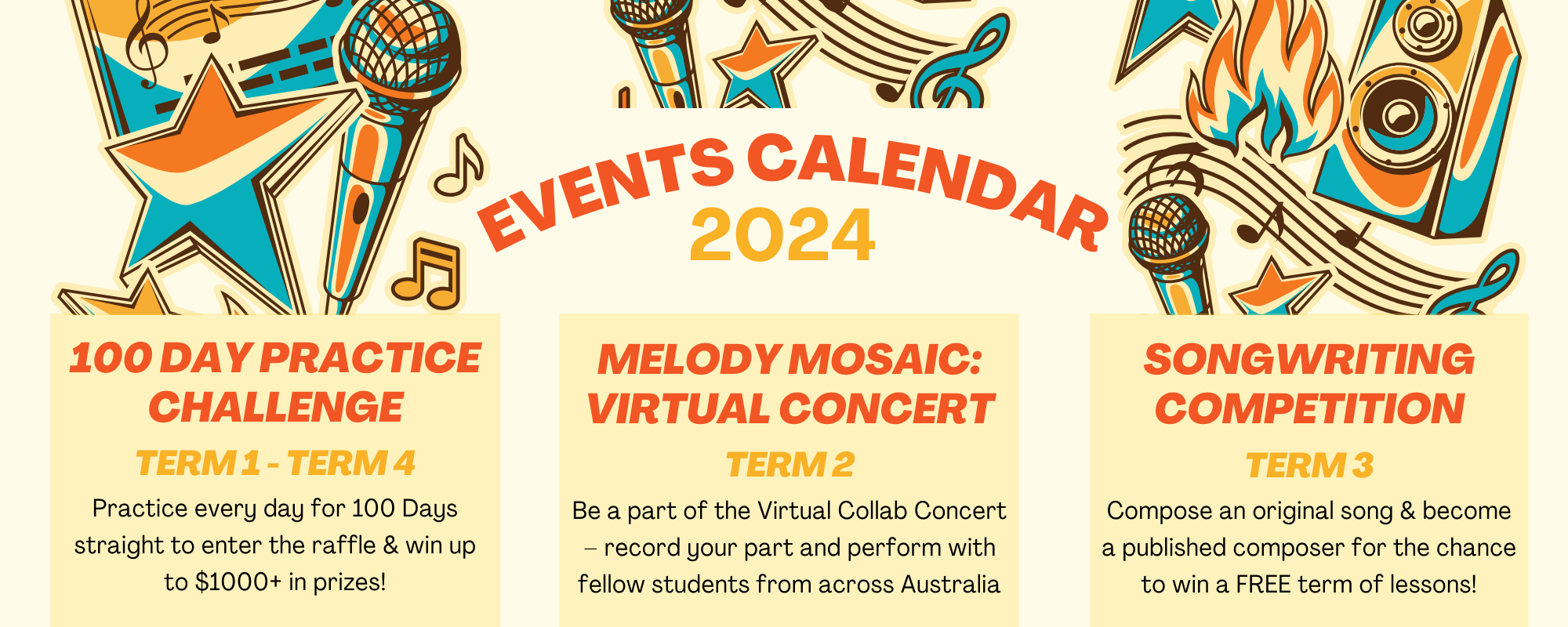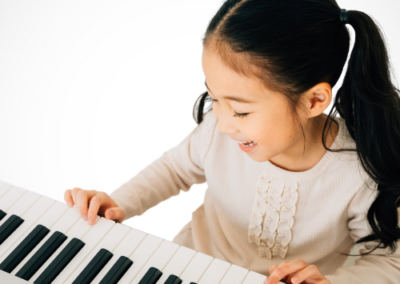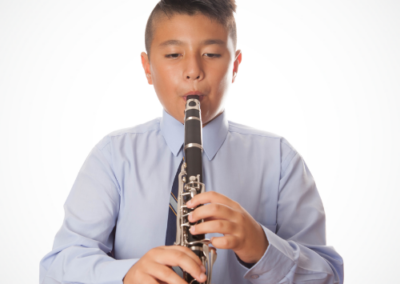Can You Teach Yourself To Play Piano?
Many people want to know “can you teach yourself to play piano” and the answer to that question is, yes. While we believe the best way to learn piano is from an instructor, we also understand that some students prefer self-learning.
The piano is one of the most versatile instruments, and learning the piano will serve you well in other areas of life. If you’re truly committed to playing this instrument, use this learning guide with 8 steps to get you started.
WE OFFER YOU IN-PERSON HOME MUSIC CLASSES FOR STUDENTS OF ALL AGES & LEVELS
If you are looking for an eager, professional & reliable local music teacher to come to your home – one of us will be available, & will be able to provide you a very affordable lesson rate.
Steps To Teach Yourself To Play Piano
Step 1) Get Your Own Piano or Keyboard
You can’t learn how to teach yourself piano if you don’t have one! Even if there’s a public place where you have access to a piano, it’s far better if you have one in the privacy of your home. That means it’s time to make an investment.
Obviously, as a beginner, you don’t need a grand piano, but you’ll at least want a quality instrument to practice on. An acoustic piano or digital keyboard are probably the best options to begin with. An acoustic piano is large and heavy and requires regular tuning to remain playable. Even though these aspects seem like downsides, nothing can truly replace the sound and feel of a real piano.
Acoustic pianos typically range from in the hundreds to the thousands of dollars. If the cost is an issue for you, however, a digital keyboard is a totally acceptable place to start. Remember, you’ll also need a keyboard stand, piano bench, and sustain pedal.
Most importantly, don’t be tempted by inexpensive, low-quality keyboards or cheap old acoustic pianos. Insist on weighted keys, which is the key to achieving different dynamics in the music you play.
2) Start by Finding Middle C
So your keyboard is all set up and you’re excited to get going. If you have no musical background, you may feel overwhelmed by looking at all those keys – but don’t worry! A great place to start is by finding middle C.
Think of middle C as home base, the place where all beginner pieces work off of. To find middle C, sit down in front of your piano and position yourself at the center. The black keys are arranged in sets of two and three.
Middle C is the white key just to the left of the grouping of two black keys near the middle of the keyboard. Place your right thumb on Middle C, pointer finger on the next white note (D), and your middle finger on the white note next to that (E). Using these three notes, you should be able to play Mary Had a Little Lamb by ear (start with E, D, C…).
Learning piano means learning a new type of language – that of music. It’s much like how you first learned the alphabet, but in this case, it’s noted that you’ll memorize. With constant practice, you’ll have these committed to memory soon enough.
Another good way to start is with the Do-Re-Mi tune (yes, the one from The Sound of Music). Each of these represents a note on the piano, starting with note C. It’ll help you get the notes’ pitch while also learning which keys to press on the piano.
- Do – Note C
- Re – Note D
- Mi – Note E
- Fa – Note F
- So – Note G
- La – Note A
- Ti – Note B
F is another one of the major keys to know the placement of by heart at the beginning. It’s the key to the left of a trio of black keys.
Memorizing your Cs and Fs right away makes it easier to memorize the location of the rest of the notes.
3) Familiarize Yourself with Sharps and Flats
The black keys play either sharps (#) or flats (b). They come in either pairs or trios. A flat or sharp note can easily be identified on these black keys.
When you see a # on a piece, that means you have to play the next higher key. A b, on the other hand, means you need to play the next lower key.
To start, look at the center of the piano. Do you see that group of one pair of blacks and a group of three? That’s where you’ll find the middle C note.
As mentioned above, all Cs appear to the left of two blacks. F to the left of three blacks. So, these ones you find in the middle of your piano are the Middle C and Middle F.
When you press the black key right above and beside the Middle C note, it produces either a C sharp (C#) or a D flat (Db). The black key beside it plays the D# or Eb. As for the black key beside Middle F, it plays F# or Gb.
Do you see the pattern now? Always remember that black keys are always either sharps or flats, but white keys can also play sharps or flats.
4) Set A Practice Goal
Begin with your end goal in mind. You want to teach yourself to play piano, but what do you want to play? How long do you want it to take?
What material will you be focusing on? Is that material online or from a book you bought? Are you looking to learn easy songs, read sheet music, minor piano chords or major piano chords? Whether it’s basic piano knowledge or advanced skills, everything should be set as a goal to learn piano.
What keys or scales do you want to be able to play? What’s your favorite song that you pictured yourself playing when you first started thinking about learning how to teach yourself to play piano?
Will you be able to teach yourself to play piano or at least certain skills in seven days? What about 14 or 30? You are just starting to learn how to teach yourself to play piano, so you probably don’t need goals beyond a month just yet. Focus on the first 30 days!
How long will you practice each day?
5) Start Practicing To Teach Yourself To Play Piano
The first tips were leading to the most important step, which is this: Do you really want to learn how to teach yourself to play piano? Then practice, every day!
Some tips for your practice sessions:
Stick to your goal. If you need a break from the same few scales or chords, try some finger speed exercises.
Practice major chords and scales. These will form the foundation of your piano playing, so be sure to do these each day. Start with the major and minor chords!
Learn the major keys. If you want to eventually play by ear and identify the sounds you make, this is important. Easy songs like “Mary Had A Little Lamb” are perfect for this!
As you start playing by ear, also begin noticing patterns. All songs are composed of musical patterns. You’ll want to start identifying and learning these patterns as you work towards your eventual goal of playing songs on the piano.
When you start playing actual songs you wanted to learn, you will be amazed at how capable you are at learning to play songs and playing piano. You may even be able to play your own music one day.
When you start playing actual songs you wanted to learn, you will be amazed at how capable you are at learning to play songs and playing piano. You may even be able to play your own music one day.
6) Practice Your Fingers and Learning Proper Finger Placement
Now that you’ve got your basics down, the next step for piano learners is to apply them with your fingers. This way, you can train your fingers to know right away without fumbling. When you are first learning to play the piano, fingering is key. You must know where your fingers are supposed to go when you are starting to play the piano and play chords.
A good place to start is the pentascale approach. Pentascales are any scale that has five (Penta) notes. Since you already know by now where the Middle C is, you can begin your finger practice with the C Major pentascale.
To begin, put your thumb on the major keys, learn the Middle C note, index on D, middle on E, ring on F, and a pinky on G. Those five notes make up this pentascale.
This is one of the easiest finger practicing techniques since it trains up all your fingers. Now, you want to start slowly, so apply the whole note approach (count four beats before pressing the next key). From here, you can move on to half notes and then quarter notes.
Once you feel more comfortable, you can move up the practice ladder to taking it two notes at a time. That means using two fingers since you’ll press two keys simultaneously. It’s a bit more complex, but it’ll help you prepare for more advanced pieces.
Finger exercises will also help prepare you for playing music.
7) Get Your Timing Right
Every note has a count – the length of time you should keep it pressed. In music sheets, you’ll find three most often used, which include the following:
- Whole notes (with four beats)
- Half notes (with two beats)
- Quarter notes (with one beat)
The white circles you see on a music sheet are whole notes. When you see these, it means you have to keep the note for four full beats (as in one-and-two-and-three).
Half notes are also white circles, with a stem attached to them. You hold these notes for two beats (one-and-two).
Quarter notes look much like half notes, except they have shaded circles. They represent one beat.
Bonus Tip – Consider Combining Self Teaching with Lessons
You may think you now know how to teach yourself piano, but just like a New Year’s resolution, you may only keep it up for a couple of weeks. Working with a private piano teacher can make a drastic difference in your motivation and the speed at which you progress. A good teacher can provide:
- Individualized instruction: Even with the above resources at your disposal, it’s difficult to know if you’re doing everything right. Are you playing that chord with the correct fingers? What if the tempo is off? Is your bad posture the reason you find it tough playing piano for more than 10 minutes at a time? Having a piano teacher by your side helps with this
- Accountability: What are the odds that you will hold yourself accountable to complete your music theory work needed to become a better pianist? Without a good piano teacher to report to, you may find yourself skipping these important steps after just a few weeks. Your technique is bound to falter and have more difficulty without a rock-solid foundation encouraged by a piano teacher.
- Motivation: Anticipating your next lesson and having a desire to show your piano teacher how much you have improved is a huge motivational tool. Even the concept of paying for a teacher is a good motivator to sit down and practice. If you’re teaching yourself, you could easily lose your drive if you get stuck on a tricky piece. There are only so many words of encouragement you can give yourself, but a teacher can help keep you back into shape.
- Correct pacing: You may be eager to jump into music that is well beyond your skill level. But if you find that learning a particular song is incredibly difficult, you’re likely to get frustrated and give up. The right teacher will know how to pace you so you’re always challenging yourself, but not to the degree of complete frustration.
- A broadened perspective: Perhaps the only reason you want to learn how to teach yourself piano is so you can play Christina Perri and Adele songs. However, a piano teacher can open your eyes to the beauty of other genres of music to round out your repertoire. With the right teacher, you’ll learn about composers you may have never considered on your own.
If you are interested in learning piano and looking for a piano teacher to have piano lessons with, look no further than Music Lessons Academy. We have highly motivated teachers dedicated to helping you achieve your dream of being a fantastic musician. We have over 550 students around Australia and in New Zealand. Contact us today to book a trial piano lesson.

PRIVATE home MUSIC lessons in Sydney, Melbourne Brisbane, Adelaide, & Perth for students of all ages & levels
If you are looking for an eager, professional & reliable music teachers to come to your home – we are available, & will be able to provide you a very reasonable music tutoring rate.
ENTHUSIASTIC STUDENTS
PROFESSIONAL TEACHERS
INSTRUMENT DISCIPLINES
What People Are Saying
My daughter’s teacher, John is superb and very talented. He is super patient with my daughter and he cares. You won’t regret taking lessons. I assure you =)


CALL BACK FORM
one of the friendly team organisers will contact you soon













